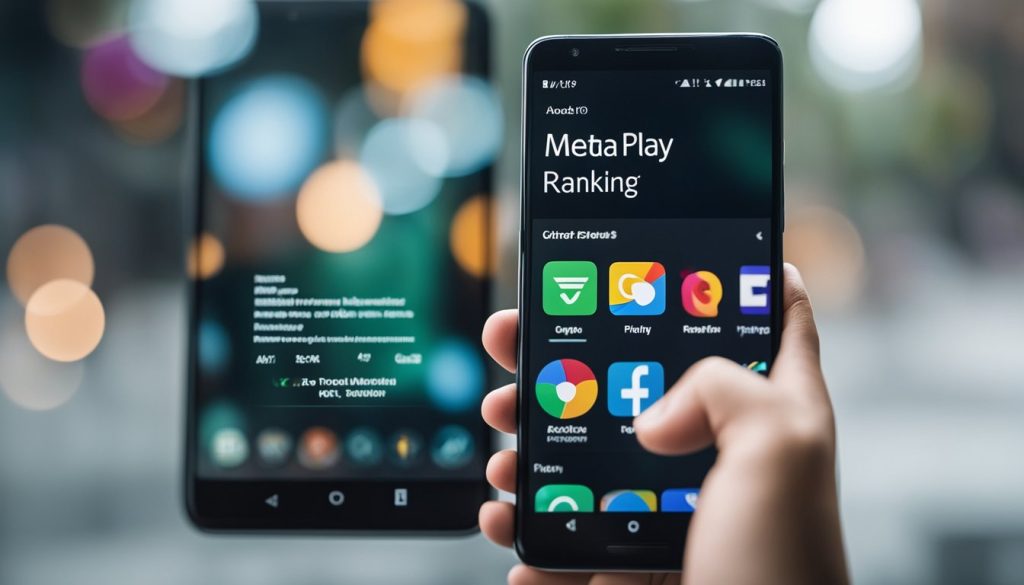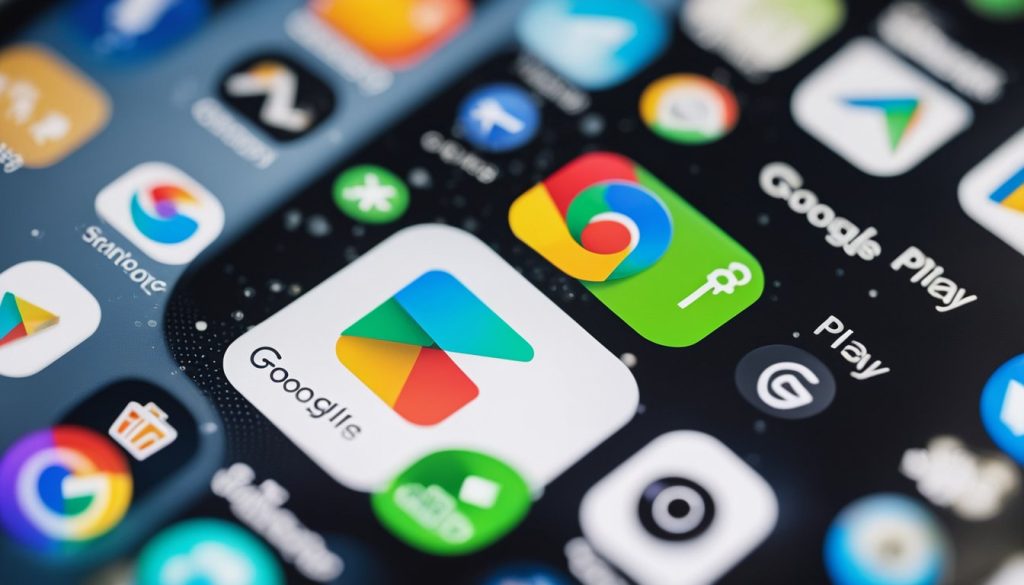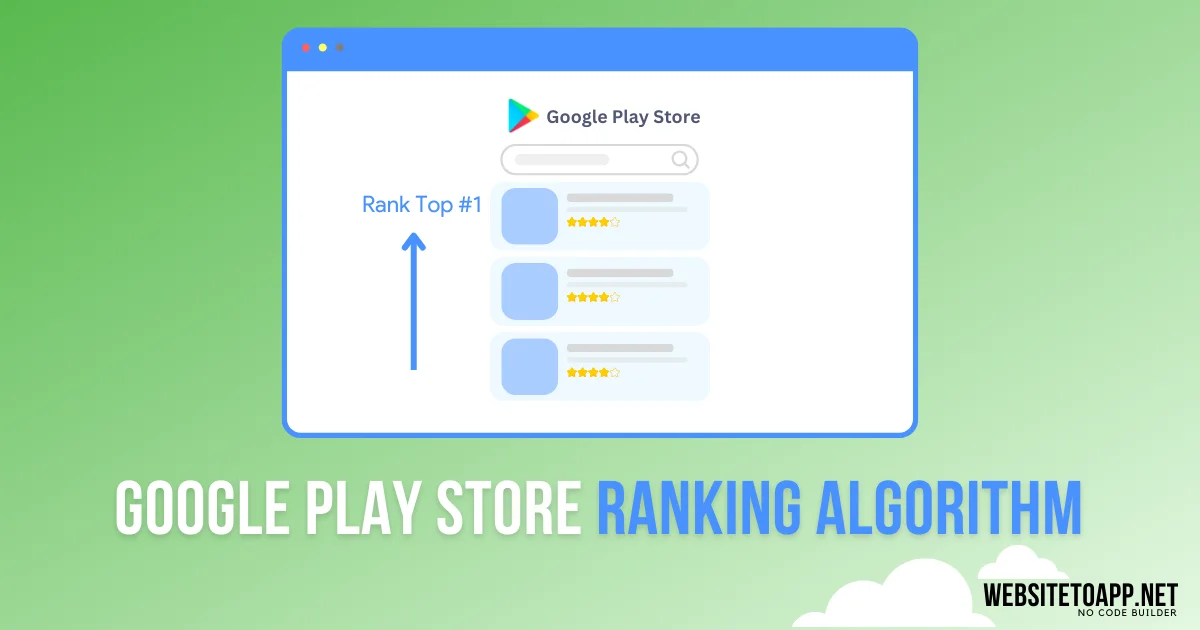The Google Play Store is the largest app marketplace in the world, with millions of apps available for download. With so many apps to choose from, it can be difficult for developers to get their apps noticed. One way to increase visibility is to improve the app’s ranking in the Google Play Store. But how does the Google Play Store ranking algorithm work?
The Google Play Store ranking algorithm is a complex system that takes into account a variety of factors to determine the ranking of an app. Some of the most important factors include the number of downloads, user ratings and reviews, and the relevance and quality of the app’s metadata, such as the app title, description, and keywords. However, the exact weight of each factor is not publicly disclosed by Google, making it difficult for developers to optimize their app for the algorithm.
Despite the lack of transparency, there are several strategies that developers can use to improve their app’s ranking in the Google Play Store. These include optimizing the app’s metadata, such as the app title and description, and encouraging users to leave positive ratings and reviews. By understanding how the Google Play Store ranking algorithm works and implementing effective optimization strategies, developers can increase their app’s visibility and ultimately drive more downloads.
Overview of Google Play Store Ranking
Google Play Store is the largest app store for Android devices, with millions of apps available for download. With so many apps available, it can be challenging for app developers to get their app noticed by users. This is where the Google Play Store ranking algorithm comes into play.
The Google Play Store ranking algorithm is a complex system that takes into account many different factors to determine the ranking of apps in the store. The algorithm is designed to provide users with the best possible experience by presenting them with high-quality apps that are relevant to their needs.
The Google Play Store ranking algorithm uses both direct and indirect factors to determine app rankings. Direct factors are those that directly impact the ranking of an app, while indirect factors are those that indirectly impact the ranking of an app.
Some of the direct factors that the Google Play Store ranking algorithm considers include:
- App quality: The quality of an app is determined by factors such as stability, functionality, and user experience. Apps that are of high quality are more likely to rank higher in the store.
- User engagement: User engagement is determined by factors such as the number of downloads, the number of active users, and the amount of time users spend in the app. Apps that have high levels of user engagement are more likely to rank higher in the store.
- App relevance: App relevance is determined by factors such as the app’s title, description, and keywords. Apps that are relevant to a user’s search query are more likely to rank higher in the store.
Some of the indirect factors that the Google Play Store ranking algorithm considers include:
- User ratings and reviews: User ratings and reviews can impact an app’s ranking in the store. Apps with high ratings and positive reviews are more likely to rank higher in the store.
- App updates: Apps that are regularly updated are more likely to rank higher in the store. This is because regular updates can improve app quality and user engagement.
- App usage data: Google Play Store collects data on how users interact with apps. This data can be used to determine app rankings in the store.
Overall, the Google Play Store ranking algorithm is designed to provide users with the best possible experience by presenting them with high-quality apps that are relevant to their needs. By understanding the factors that impact app rankings in the store, app developers can optimize their apps for better visibility and increased downloads.
Key Factors Influencing Rankings

Google Play Store’s ranking algorithm is complex and takes into account various factors when determining an app’s ranking. Here are some of the key factors that influence app rankings on the Google Play Store:
App Quality and Relevance
The quality and relevance of an app are crucial factors that determine its ranking on the Google Play Store. The app should be well-designed, easy to use, and free of bugs and crashes. Additionally, the app should be relevant to the user’s search query and provide value to the user.
To improve the quality and relevance of an app, developers should focus on optimizing their app’s metadata, including the title, description, and keywords. They should also ensure that the app’s content is up-to-date and relevant to the user’s needs.
User Engagement Metrics
User engagement metrics, such as the number of downloads, installs, and ratings, also play a vital role in determining an app’s ranking on the Google Play Store. The more downloads and installs an app has, the higher its ranking will be. Additionally, apps with higher ratings and positive reviews are more likely to rank higher on the Play Store.
To improve user engagement metrics, developers should focus on promoting their app through various channels, including social media, email marketing, and paid advertising. They should also encourage users to rate and review their app on the Play Store.
App Freshness and Updates
The frequency of app updates and the freshness of its content also play a role in determining an app’s ranking on the Google Play Store. Apps that are frequently updated with new features and bug fixes are more likely to rank higher on the Play Store.
To improve app freshness and updates, developers should focus on providing regular updates to their app and adding new features that provide value to the user. They should also ensure that their app’s content is up-to-date and relevant to the user’s needs.
Overall, developers should focus on optimizing their app’s quality, relevance, user engagement metrics, and freshness to improve their app’s ranking on the Google Play Store.
Algorithm Updates and Changes
The Google Play Store ranking algorithm is constantly evolving and changing to provide users with the best possible experience. Google makes thousands of algorithm updates every year, and it is crucial for developers to keep track of these changes to optimize their apps for the store.
One recent update to the algorithm was made in August 2018, with the goal of improving the discovery of quality apps. Google made changes to the Play Store algorithm to enhance the experience of users who visit the store every day. The changes included updates to the review metadata and upvote signals, as well as changes to the syntax of review URLs.
Developers should also pay attention to updates in the ASO (App Store Optimization) strategy for Google Play. In November 2023, Google made changes to the algorithm to help apps get better visibility, more downloads, higher conversion rates, and ultimately app growth. Read the 2023 November Google Play Store 20 Tester Update. Developers should consider factors such as keyword optimization, app description, and user engagement when optimizing their apps for the Play Store.
It is important for developers to stay up-to-date with the latest algorithm updates and changes to ensure that their apps are optimized for the Play Store. By keeping track of these changes and adjusting their ASO strategy accordingly, developers can improve their app’s visibility and increase their chances of success on the Play Store.
Role of User Reviews and Ratings

User reviews and ratings are one of the most critical factors that impact the ranking of apps on the Google Play Store. The algorithm of Google Play Store considers the user reviews and ratings to determine the popularity and quality of an app. In this section, we will discuss the impact of positive reviews and the consequences of negative feedback.
Impact of Positive Reviews
Positive reviews and high ratings are essential for the success of an app on the Google Play Store. They help to build trust and credibility among potential users, which leads to higher downloads and better rankings. Positive reviews also indicate that the app is useful, user-friendly, and meets the expectations of the users.
Developers can encourage users to leave positive reviews by providing excellent customer support, responding to feedback, and continuously improving the app’s features and functionality. It is also essential to ensure that the app is bug-free and runs smoothly on different devices.
Consequences of Negative Feedback
Negative feedback can have a detrimental impact on the ranking of an app on the Google Play Store. Negative reviews and low ratings indicate that the app has issues, bugs, or lacks essential features. They can also indicate that the app is not user-friendly, difficult to navigate, or has poor customer support.
Developers should take negative feedback seriously and use it as an opportunity to improve the app. They should respond promptly to negative reviews, acknowledge the user’s concerns, and provide solutions to their problems. It is also essential to fix any bugs or issues as quickly as possible and release updates regularly.
In conclusion, user reviews and ratings are crucial for the success of an app on the Google Play Store. Developers should focus on providing excellent customer support, responding to feedback, and continuously improving the app’s features and functionality to encourage positive reviews. They should also take negative feedback seriously, fix any issues, and improve the app to prevent further negative feedback.
Importance of App Metadata

App metadata is a crucial factor in Google Play Store’s ranking algorithm. It includes all the textual and visual elements that describe an app. The metadata helps Google Play Store understand what the app is about and who it is intended for. Here are the two main components of app metadata:
App Title and Description
The app title and description are the most important textual elements of app metadata. They should accurately and concisely describe the app’s purpose and features. The app title should be unique, memorable, and contain relevant keywords. The description should be well-written, informative, and highlight the app’s unique selling points. It should also include relevant keywords to improve the app’s visibility in search results.
Visual Elements
Visual elements such as app icon, screenshots, and videos are also essential components of app metadata. They help users understand the app’s user interface, features, and overall design. The app icon should be eye-catching, unique, and relevant to the app’s purpose. Screenshots should showcase the app’s key features and user interface. Videos are optional but can be a powerful tool to showcase the app’s features and benefits.
In conclusion, app metadata plays a vital role in Google Play Store’s ranking algorithm. Developers should pay close attention to app metadata and optimize it for maximum visibility and downloads. By creating a well-written app title and description and using visually appealing elements, developers can improve their app’s chances of ranking higher in Google Play Store’s search results.
Strategies for Optimization

Keyword Optimization
One of the most important factors that influence the ranking of an app in the Google Play Store is keyword optimization. Developers should conduct thorough research to identify the most relevant and high-traffic keywords for their app. Once identified, these keywords should be used in the app’s title, description, and other metadata.
It is important to note that keyword stuffing, or overusing keywords, can actually harm the app’s ranking. Developers should aim to use keywords naturally and strategically, without compromising the quality of the app’s content.
Conversion Rate Optimization
Conversion rate optimization (CRO) is another crucial strategy for optimizing an app’s ranking in the Google Play Store. CRO involves improving the app’s user experience and design to increase the likelihood of users downloading and using the app.
Developers should focus on creating a user-friendly interface, clear and concise app descriptions, and visually appealing screenshots and videos. It is also important to regularly update the app with bug fixes and new features to keep users engaged and improve the app’s overall rating.
By implementing effective keyword optimization and conversion rate optimization strategies, developers can improve their app’s ranking in the Google Play Store and increase their visibility to potential users.
Understanding Competitor Analysis

To understand how Google Play Store ranking algorithm works, it is essential to perform a competitor analysis. This analysis helps app developers to identify their competitors and their strengths and weaknesses. By analyzing competitors, app developers can gain insights into what they can do to improve their app’s ranking.
Competitor analysis involves collecting information about competitors, including their app name, app icon, screenshots, app description, and keywords. This information helps app developers to understand how their competitors are ranking and what they can do to improve their app’s ranking.
One way to perform competitor analysis is by using app store optimization (ASO) tools. These tools can provide insights into competitors’ app data, including their app ranking, app reviews, and app ratings. By analyzing this data, app developers can identify their competitors’ strengths and weaknesses and gain insights into what they can do to improve their app’s ranking.
Another way to perform competitor analysis is by analyzing competitors’ app reviews. App reviews provide valuable insights into what users like and dislike about competitors’ apps. By analyzing competitors’ app reviews, app developers can gain insights into what they can do to improve their app’s user experience.
Overall, competitor analysis is an essential part of understanding how the Google Play Store ranking algorithm works. By analyzing competitors, app developers can gain insights into what they can do to improve their app’s ranking and gain a competitive advantage in the app marketplace.
Monitoring Performance and Adjusting Strategy
After implementing an ASO strategy, it is important to monitor its performance to determine its effectiveness. The Google Play Console provides developers with a range of tools and metrics to track their app’s performance and make data-driven decisions.
One of the key metrics to monitor is the app’s ranking for specific keywords. By tracking keyword rankings, developers can identify which keywords are driving the most downloads and adjust their strategy accordingly. Tools like Sensor Tower and App Annie can also provide valuable insights into keyword performance and competitor analysis.
Another important metric to monitor is user reviews and ratings. The quality and quantity of reviews can have a significant impact on an app’s ranking. Developers should encourage users to leave reviews and respond to feedback promptly to improve user satisfaction and app performance.
In addition to monitoring metrics, developers should also regularly update their app’s metadata, including the title, description, and screenshots. By continually optimizing these elements, developers can ensure their app remains relevant and competitive in the app store.
Overall, monitoring performance and adjusting strategy is crucial to achieving and maintaining a high ranking in the Google Play Store. By staying up-to-date with the latest ASO trends and metrics, developers can make data-driven decisions and maximize their app’s success.
if you want to read about Apple App Store App Ranking System check it out from here.
